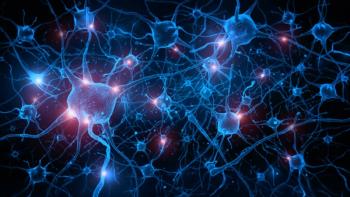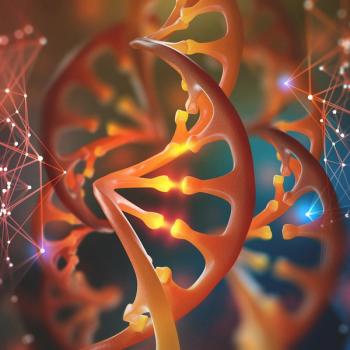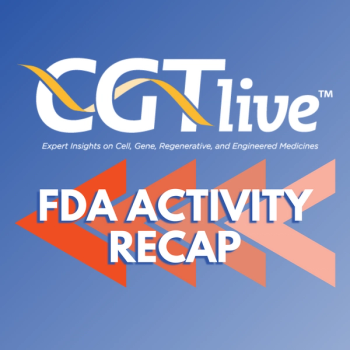
Off-the-Shelf, SARS-CoV-2-Specific T Cells Display Antiviral Activity
The effector profile of the SARS-CoV-2 virus–specific T-cell therapy, ALVR109, was polyclonal, polyfunctional, and displayed cytolytic activity against viral targets without allogeneic or autologous reactivity, suggesting ALVR109 could be a safe and effective treatment for the coronavirus disease 2019.
The effector profile of the SARS-CoV-2 virus–specific T-cell therapy, ALVR109, was polyclonal, polyfunctional, and displayed cytolytic activity against viral targets without allogeneic or autologous reactivity, suggesting ALVR109 could be a safe and effective treatment for the coronavirus disease 2019 (COVID-19), according to findings from a preclinical study that were presented during the
After a single in vitro simulation, reactive SARS-CoV-2–specific T cells expanded well, with a mean 9.3±1.1 fold–increase in T-cell numbers. The expanded viral specific T cells consisted predominantly of CD3 T cells, with a mix of CD8 cytotoxic and CD4 helper T cells.
The cells were also able to specifically kill viral antigen–expressing autologous targets, with no activity against non-infected autologous or allogenic targets. Specifically, the cytolytic activity of the virus-specific T cells selectively killed virus-expressing targets while leaving non-infected targets untouched.
“These data demonstrate the exquisite selectivity of these cells against the virus and supports this effort for clinical use in high-risk COVID-19 patients,” said Spyridoula Vasileiou, PhD, lead study author and postdoctoral associate at Baylor College of Medicine, in a virtual presentation of the data.
SARS-CoV-2 is a single-stranded, positive-sense RNA virus that has approximately 80% sequence homology to SARS-CoV and 52% homology to MERS-CoV.
COVID-19, caused by SARS-CoV-2, has resulted in more than 66,000,000 confirmed cases worldwide as of December 5, 2020.2 In the United States, more than 14,000,000 cases of COVID-19 have been confirmed, resulting in approximately 277,000 deaths as of December 5, 2020.3
Approximately 20% of patients who contract COVID-19 develop severe disease leading to acute respiratory distress syndrome and admission to the intensive care unit. Older age (> 65 years), comorbidities, such as obesity, hypertension, diabetes, and coronary heart disease, and immune compromise, are risk factors that are associated with poor outcomes. Moreover, SARS-CoV-2 infections have resulted in mortality rates of up to 20% in immunocompromised patients who undergo allogeneic stem cell transplant.
In October 2020, the FDA approved the first treatment for COVID-19: remdesivir (Veklury). However, there remains an unmet need for effective treatment options.
Growing evidence suggests that T cells have a protective role in preventing COVID-19. In elderly patients and individuals with severe vs mild COVID-19, T-cell deficits and dysregulation have been reported (P < .0001 and P < .01, respectively), illustrating the importance of cellular immunity in fighting the disease.
To that end, investigators evaluated whether adoptively transferred T cells could provide therapeutic benefit.
In the study, investigators first evaluated the endogenous T-cell responses to COVID-19 in individuals who had recovered from the virus without hospitalization. Subsequently, investigators evaluated the immune activity against potential SARS-CoV-2 target antigens in order to identify those that had immunodominant recognition by immunocompetent individuals.
In doing so, investigators exposed convalescent donor–derived peripheral blood mononuclear cells to overlapping peptide libraries, spanning candidate antigens, followed by ex vivo expansion. The results were profiled on cells to characterize the specificity and effector functions.
Once the viral antigens that were most commonly recognized in the majority of individuals had been identified, investigators would proceed to the manufacturing phase.
To identify immunodominant target antigens, investigators cultured peripheral blood mononuclear cells from convalescent donors with a mix of overlapping peptide libraries, spanning candidate structural, nonstructural, and accessory SARS-CoV-2 proteins. Viral-specific cells were subsequently expanded with activating cytokines.
Following expansion, investigators evaluated the immune response to each of the individual-stimulating antigens. Investigators identified a subset of immunodominant structural and nonstructural proteins that were immunogenic in the majority of donors screened (n = 8) and that induced the highest magnitude of responses based on enumerating interferon gamma–secreting cells.
From this, 3 structural and 2 nonstructural proteins were taken forward for manufacturing in preclinical testing.
“The [reactive SARS-CoV-2–specific T cells that underwent expansion in vitro] had the phenotype consistent with effector function and memory potential, as evidenced by upregulation of the activation markers, CD69 and CD28, and expression of central and effector memory markers, with minimal PD-1 or TIM3 expression,” said Vasileiou.
With cytokine staining, investigators showed that immune reactivity was polyfunctional, mediated by CD4 and CD8 T-cell subsets (14.45% and 4.77%, respectively). Moreover, the majority of interferon gamma–producing cells also produced TNF-alpha (9.4%), characteristics of which had been associated with superior clinical outcomes in vivo.
“Almost 15% of the virus-specific populations were capable of simultaneously secreting 2 or more cytokines in response to viral antigen stimulation, once again highlighting the
polyfunctionality and their potential to produce effective anti-viral effects in vivo,” said Vasileiou.
“Based on this preclinical data, we advance this product to the clinic for use in hospitalized patients with COVID-19 who are at highest risk for poor outcomes,” concluded Vasileiou.
The trial will evaluate 3 doses of the SARS-CoV-2 virus-specific T-cell therapy, ALVR109––1 x 107, 2 x 107, and 4 x 107 cells––after which patients will be randomized to standard of care or standard of care plus the optimized dose of ALVR109.
References
- Vasileiou S, Kuvalekar M, Workineh A, et al. Using allogeneic, off-the-shelf, SARS-Cov-2-specific T cells to treat high-risk patients with COVID-19. Presented at: 2020 ASH Annual Meeting & Exposition; December 4-8, 2020; virtual. Abstract 612.
- COVID-19 dashboard by the center for systems science and engineering (CCSE) at Johns Hopkins University (JHU). Johns Hopkins University Medicine. Updated December 5, 2020. Accessed December 5, 2020. https://bit.ly/37K8tjY.
- CDC COVID data tracker: United States COVID-19 cases and deaths by state. Centers for Disease Control and Prevention. Updated December 5, 2020. Accessed December 5, 2020. https://bit.ly/32ulDj8.
Newsletter
Stay at the forefront of cutting-edge science with CGT—your direct line to expert insights, breakthrough data, and real-time coverage of the latest advancements in cell and gene therapy.










































